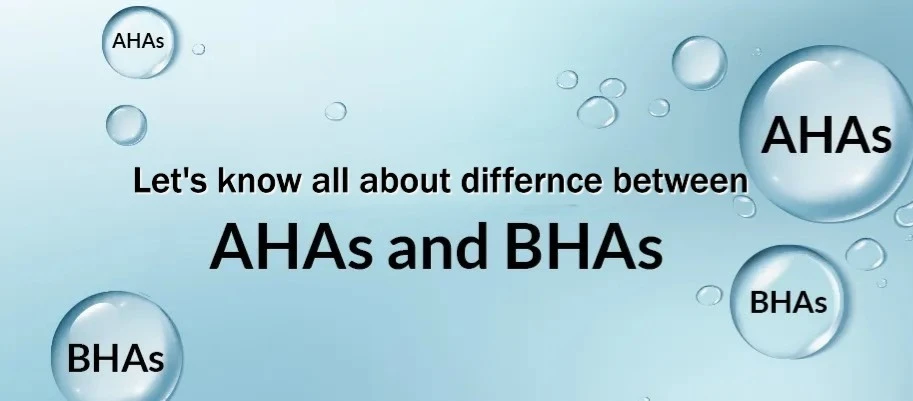What is the difference between AHAs BHAs?
What Is the Difference Between AHAs and BHAs?
AHAs (Alpha Hydroxy Acids) and BHAs (Beta Hydroxy Acids) are two types of chemical exfoliants commonly used in skincare to improve skin texture, unclog pores, and promote a more radiant complexion. While both serve the purpose of exfoliation, they work in different ways and are best suited for different skin types and concerns.
1. Chemical Structure and Solubility
The primary difference lies in their solubility:
-
AHAs are water-soluble acids derived from fruits and milk (e.g., glycolic acid from sugar cane, lactic acid from milk).
-
BHAs are oil-soluble, with salicylic acid being the most common form.
This solubility difference determines how deeply each acid penetrates the skin. AHAs work mainly on the surface layer, while BHAs can go deeper into oil-filled pores.
2. How They Work
-
AHAs exfoliate the skin by loosening the bonds between dead skin cells on the surface, making them easier to shed. This process reveals fresher, brighter skin and improves texture and tone.
-
BHAs penetrate deeper into the pores and dissolve the oil and dead skin cells that can lead to acne and blackheads. They are anti-inflammatory and antibacterial, which makes them great for acne-prone skin.
3. Common Types
-
AHAs:
-
Glycolic acid – the most effective AHA due to its small molecular size.
-
Lactic acid – gentler, also hydrating.
-
Mandelic acid – ideal for sensitive skin and darker skin tones.
-
-
BHAs:
-
Salicylic acid – the only BHA used in skincare. It’s derived from willow bark and is particularly effective in treating acne.
-
4. Best for Skin Types and Concerns
-
AHAs:
-
Best for dry, dull, aging, or sun-damaged skin.
-
Great for reducing fine lines, hyperpigmentation, and rough texture.
-
Can improve skin hydration and stimulate collagen production.
-
-
BHAs:
-
Best for oily, acne-prone, or combination skin.
-
Effective at clearing clogged pores, reducing blackheads and whiteheads, and calming inflammation.
-
5. Potential Side Effects
-
AHAs can increase sun sensitivity, so using sunscreen daily is essential when using them.
-
BHAs are generally less irritating but can cause dryness if overused.
6. Usage Tips
-
Start slow: use 2–3 times a week to avoid over-exfoliation.
-
Don’t combine strong AHAs and BHAs in the same routine unless formulated together.
-
Follow with moisturizer and SPF in the morning.
Conclusion
AHAs and BHAs are powerful tools for skin renewal, but choosing the right one depends on your skin type and concerns. If you’re battling dullness and fine lines, AHAs may be your best friend. If acne and oily skin are the issues, BHAs offer deep pore-cleansing benefits. With regular use and proper care, both acids can reveal smoother, healthier skin.

Related Blog
What Causes Oily Skin and Can It Be Managed Naturally? Exploring Root Causes and Gentle Solutions
Aug 2, 2025 by Admin
General
What Are the Signs That You Have Sensitive Skin? Key Symptoms to Help You Identify This Delicate Skin Type
Aug 1, 2025 by Admin
General